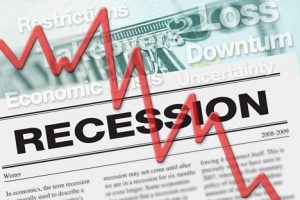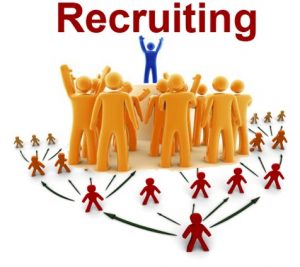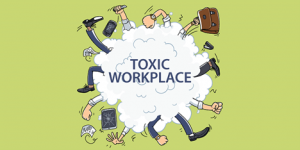 LOSING A GREAT EMPLOYEE? WAIT, THEY CAN WORK REMOTELY, FROM WHEREVER, RIGHT?!
LOSING A GREAT EMPLOYEE? WAIT, THEY CAN WORK REMOTELY, FROM WHEREVER, RIGHT?!
NOT SO FAST ……. As more employers roll out hybrid work policies, there are many complex legal considerations to take into account. Hybrid work impacts tax compliance, reimbursement for work expenses and prohibitions against discrimination, among other things.
Workers and job applicants are pressing companies for hybrid schedules, and “addressing this tension raises a host of legal and practical considerations,” said Devjani Mishra, a lawyer with Littler in New York City.
Hybrid work means an employee works some days at the worksite and some days at home. Sixty-three percent of employers offer hybrid work opportunities to most workers, according to the Society for Human Resource Management’s 2022 Employee Benefits Survey.
For tax and legal compliance reasons, employees’ work and home locations need to be up-to-date and consistent across all of your organization’s systems, not just your payroll system. It’s helpful if offer letters and employment contracts spell out the hybrid model and the expectations for coming into the worksite.
Ten states and Washington, D.C., require employers to reimburse remote workers for necessary business-related expenses, such as office supplies and a portion of monthly bills for Wi-Fi, cellphone service and utilities. Each state applies different standards in this situation.
Tax Considerations
State corporate tax rates and unemployment tax rates vary. Some states have additional corporate taxes for things like paid family leave.
“Employers may expose themselves to additional corporate tax obligations, as well as registration requirements, by allowing their employees to work from a state where they do not otherwise operate,” said Adam Tomiak, a lawyer with Epstein Becker Green in New York City.
Income taxes on employee wages is a separate issue. Usually, employers withhold personal income taxes for the state where the work was conducted. People who work in a state they do not live in may be subject to income tax withholding for both states.
For example, if someone works at home two days per week and at the office three days per week and the office is in a different state from where the employee lives, that might be enough to create a business presence known as a nexus, triggering income tax obligations in the home state as well as the work state. During the COVID-19 pandemic, many states waived the nexus rule. However, employers and HR professionals need to be aware of any local updates that signal the end of the emergency period and re-establishment of the nexus rule.
Sometimes the payment of any wages for work in a state is enough to trigger employer registration and withholding requirements. However, most states enforce withholding requirements only if the employer meets a certain economic threshold, such as a certain number of sales transactions or a certain amount of total annual sales. Arizona, California, Indiana, Oregon and Virginia give employees credits on their income taxes when they work in one of those states and live in another.
Connecticut, Delaware, Nebraska, New Jersey, New York and Pennsylvania have “convenience of the employer” tests. Under this rule, for example, Connecticut imposes income tax on a person working remotely in Rhode Island for a company located in Connecticut, if the person works remotely for their own convenience. The tax withholding would occur only in the work state if the work happens remotely for the employer’s convenience.
Exempt vs. Nonexempt
If nonexempt employees are working a hybrid schedule, it can be more complex for the employer to comply with state and federal wage and hour laws. Depending on the location, such compliance includes following rules governing safety, overtime pay, minimum wage, required rest and meal breaks, and record keeping for hours worked.
“Employers should first review their policies to ensure they support Fair Labor Standards Act (FLSA) compliance, including with respect to record-keeping requirements for nonexempt employees and the advance approval of overtime,” Tomiak said. “Employers may also consider the practical aspects of remote work for nonexempt employees, and whether employee access to remote working tools can be monitored to track the accuracy of timesheets.”
Tax rules and FLSA requirements are important to consider when an employee moves to a different state and remains in the same job.
“When employees, whether exempt or nonexempt, move to new jurisdictions, they may become subject to an entirely new legal framework,” Tomiak said. “With respect to nonexempt employees, this may include requirements with respect to the rates of pay, the calculation of overtime, and the timing of and information provided on paychecks.”
A move to a different state could require changes to the time-keeping tool the employee uses to track work hours. In some states, overtime is calculated by the day, while in other states, it’s calculated by the workweek.
Avoid Discrimination
You should make sure your organization’s decisions to permit or deny hybrid work arrangements don’t discriminate against people in legally protected groups. The hybrid work policy should avoid discrimination by race, religion, gender, age, sexual orientation, disability and pregnancy status. It’s probably not legal if the data shows there’s been unequal treatment or an adverse impact on workers in a protected group.
To avoid discrimination claims, it’s wise to have a written policy that outlines the criteria for determining whether to allow or refuse a request for a hybrid work schedule. Then make sure supervisors apply the policy in a consistent and fair manner.
With more employees working from home and interacting with co-workers via e-mail, text, videoconferencing and instant messaging, it’s important for companies to prevent online harassment and hostile online environments. Digital platforms can contain the ingredients for harassment lawsuits the same way that physical office buildings can. Any employee trainings and written policies that you have regarding harassment should make it clear that the same rules apply to in-person communication and online communication.
Is your company considering Remote Work or Hybrid Work for any employees? Before you say yes, please contact your HR Consultant to the latest and greatest news concerning Hybrid and Remote Work.
Read the article here: SHRM: Legal Challenges with Hybrid and Remote Workers
The Creating a Respectful and Open World for Natural Hair Act of 2022, known as the CROWN Act of 2022, is a bill currently in the senate, (already passed in the House) in the United States Congress, intended to prohibit discrimination based on hairstyle and hair texture by clarifying that such discrimination is illegal under existing federal law.
This Act was first introduced in California in January 2019 and signed into California law on July 3, 2019. The inaugural CROWN Act expanded the definition of race in the Fair Employment and Housing Act (FEHA) and state Education Code, to ensure protection in workplaces and in K-12 public and charter schools. Since then, The CROWN Act has galvanized support from federal and state legislators in the movement to end hair discrimination nationwide.
On December 5, 2019, U.S. Senator Cory Booker (D-NJ) unveiled a bill that would ban discrimination based on hair textures and hairstyles that are commonly associated with a particular race or national origin. It is co-sponsored by U.S. Senator Sherrod Brown (D-OH). U.S. Representative Cedric Richmond (D-LA) introduced companion legislation in the House of Representatives and is joined by Representatives Ayanna Pressley (D-MA), Marcia Fudge (D-OH), and Barbara Lee (D-CA).
On March 18, 2022, the measure, H.R. 2116 — or the Creating a Respectful and Open World for Natural Hair Act — passed on a vote of 235 to 189, with 14 Republicans joining all Democrats in supporting the measure. The legislation was introduced by Rep. Bonnie Watson Coleman (D-N.J.). The act has moved to the Senate and is awaiting voting.
Below is a summary of numbers of states and how they fare as it concerns the CROWN Act.
- 17 States CROWN is law
- 2 States pending legislation
- 6 States have no pending legislation
- 25 States have filed or pre-filed
How does your business handle Natural Hair? Need help with including it in a handbook or policy? Contact your HR Consultant.
 REALLY?
REALLY?
Remember when you were a broke 20-something who never checked your bank-account balance? Ignorance was bliss as you bought an iced coffee and prayed your biodegradable, turtle-safe straw wouldn’t be the one to break the camel’s back.
We regret to inform you that this is not the approach to take when on the precipice of a recession. If the stock market falls in a forest, it will make a sound, even if we bury our heads in the sand. Now that former US Treasury Secretary Larry Summers has predicted a recession is “almost inevitable,” it’s time to talk about the economy.
In plain English, what’s a recession? If you took a macroeconomics class in school, you know that a graph showing healthy economic growth moves up and to the right. Expansion is good. One of the most common metrics of expansion is gross domestic product (GDP), which measures the value of goods and services produced in a country.
According to economist Julius Shiskin, recessions occur when the GDP graph trends down for two consecutive quarters. The National Bureau of Economic Research (NBER) added to this definition, stating a recession is “a significant decline in economic activity spread across the economy and that lasts more than a few months,” normally visible in real GDP, real income, employment, industrial production, and wholesale-retail sales, among other factors. Not all of these indicators need to dip for a recession to occur; as Bloomberg reports, “extreme conditions” impacting just one of these economic indicators could be enough to trigger a recession.
Briefly, where are we? TL;DR: The graph is moving in the wrong direction. In the first quarter of the year, economic strains, including ongoing Covid disruptions and the end of federal pandemic assistance, caused the US GDP to slip 1.5%—the biggest drop since Q2 of 2020, when pandemic-related shutdowns began. The Atlanta Federal Reserve’s GDP Now model predicts second-quarter growth will be 0.3%.
…Uh-oh.
It’s death by a thousand cuts. Inflation is the highest it’s been in four decades (close to 9%). Higher costs have rocked business and consumer sentiment; in May, the latter hit its lowest level in nearly 11 years.
When people get worried about the economy, they tend to stop spending money (that’s the wholesale retail sales piece of GDP). Already, many have begun to spend less.
Plus, even if consumers wanted to spend money, they might not be able to afford the goods and services they’re eying. Last week, diesel gas cost $5.81 a gallon, up 80% year-over-year, ABC News reported. Diesel prices, experts say, impact the cost of, well, almost everything.
“Trucks run on diesel, and those costs get passed on to the consumer—that’s why the price of eggs, the price of milk, beer, go up,” Denton Cinquegrana, chief oil analyst at market research firm OPIS, told ABC News. “It’s the price of diesel that kind of breaks the back of the economy eventually.”
The Federal Reserve has tried to put the kibosh on inflation. In June, it announced a massive interest-rate increase in an attempt to essentially throw cold water on the economy. But some worry the Fed acted like your coworker who “follows up” on an email just an hour after sending: They were too aggressive. Some stock investors are concerned high interest rates could slow down the economy down too much, making the GDP problems worse.
Okay, yes, this sounds very, very bad. Should I panic? The bad news is a recession looks likely (though not inevitable). Economists at Bloomberg, Deutsche Bank AG, and Nomura Holdings Inc. predict we’ll enter a recession between the end of 2022 and beginning of 2024.
Others think we’re already there.
The good news is that recessions are a natural part of the economic cycle: Economies grow and they contract. Recessions typically last anywhere from six to 12 months, so while they may not be pleasant, they don’t last forever.
What can HR do? Should a recession occur, HR leaders may have to make hard choices—they may need to cut benefits, put raises on hold, or even lay off staff. To find out what tools HR has available to weather the storm, reach out to your HR Consultant.
Special thanks to HR Brew for the article (6/28/22).
 STATE OF WORK AROUND THE WORLD
STATE OF WORK AROUND THE WORLD
The James Webb Space Telescope images released last week were a beautiful reminder that maybe, just maybe, the universe doesn’t revolve around corporate America. And apparently there’s a lot happening in the world of work outside the US.
Trouble in Asia. Employment confidence in China has tanked, according to a Nasdaq report, reaching its lowest level in Q2 since the Great Recession as the job market flails and Gen Z struggles to find work after graduating.
Meanwhile, some South Koreans are going back to the office and getting a reminder of what they left behind. A June survey found that reports of “gapjil”’—toxic workplace culture—have increased nearly 7% since March, according to CNN. Though gapjil declined following the passage of a 2019 anti-bullying law meant to stop harassment in South Korean workplaces, the survey found that as companies have returned to offices following the pandemic, workers (especially women, temporary workers, and those in the service industry) have increasingly faced inappropriate conduct.
Changes in Europe. Joining Taiwan, Indonesia, and South Korea, Spain may soon become the first European country to guarantee paid menstrual leave. Should the proposal pass, the Spanish government will be responsible for funding the program, as opposed to menstrual leave sometimes provided in the US directly by participating employers.
In October, Spain will also be the first European country to implement the EU’s proposed artificial intelligence legislation, Politico reported. Its decision to adopt the Artificial Intelligence Act (expected to go into effect across the EU in 2023), which “seeks to enforce strict rules on technologies like facial recognition and algorithms for hiring,” comes on the heels of new Spanish legislation that grants gig workers for companies like Uber and Deliveroo visibility into algorithms affecting scheduling and assessing productivity.
Workers in Belgium, France, and the UK, among other European nations, are going on strike to demand higher wages in response to high inflation. The Wall Street Journal reports that while strikes are common in Europe during the summer, there are more workers on strike than usual, with the economic conditions “emboldening labor leaders.”
Down under. Australians just got a raise. The country increased its minimum wage by 5.2% to $21.38 AUD on July 1 to combat its 5.1% inflation rate, according to The Guardian.
Every culture is unique, but the various iterations of The Office suggest that workplaces around the world aren’t too different after all.
 RECRUITING 101: 5 TIPS FOR BETTER INTERVIEWS
RECRUITING 101: 5 TIPS FOR BETTER INTERVIEWS
- Be Prepared
Not being prepared for an interview is a disservice to the candidate and the whole process, said Sara Ferraioli, senior vice president of recruiting at Planet Professional, a Boston-based talent acquisition firm. “Too many recruiters are skimming the resume while walking into the interview,” she said.
Sarah Greer, an independent recruiter in the Washington, D.C., area, recommended researching the candidates and writing out questions in advance.
Ferraioli agrees with this approach. Prepping on the candidate’s background and having questions ready to go is much more productive than “doing it on the fly.”
Find out as much as you can about the open role, and see if it matches what is important to the candidates as they grow their career, said Debbie Zoerkler, SHRM-CP, senior specialist in talent acquisition at the Society for Human Resource Management.
“Provide the candidate with as much information as possible [about the job] to determine if this really is the right match for them,” she said. “Paint the picture for them. It’s not only the job description or their skill set that matters. Does this culture match their values?
“To do that, recruiters will need to understand the role they’re recruiting for and the business of the employer.”
Ferraioli explained, “I can’t stress enough how important it is to understand the employer and really sell what it does—the job, benefits, projects. That goes a long way in the initial screen interview. If it’s not done well, it can leave a candidate feeling less interested.”
Recruiters should also make sure that candidates are prepared for interviews as the process advances. “Recruiters are coaches too,” Zoerkler said. “Let [candidates] know who they will be interviewing with, what the expectations are, what the action items are, about the dress code—prepare them to nail it. Do not assume they know the interview process, since not all companies have the same process.”
- Be Respectful
Both recruiters and hiring managers must be respectful of candidates’ time by being punctual for interviews. “There’s absolutely no excuse for keeping a candidate waiting,” said Katrina Collier, candidate engagement expert at Katrina Collier Limited in London and author of The Robot-Proof Recruiter (Kogan Page, 2019).
“This is a candidate’s market. You can bet that if you’re late for an interview, they will go and report that on Glassdoor or Indeed.”
Use the brief time you have together to put candidates at ease and show them your culture. “Be conversational and genuine,” Collier said.
Greer added that interview questions should flow like a conversation—not an interrogation.
“It’s OK to go off script with follow-up questions, but keep it relevant,” she said. “Don’t throw curveballs to try to trick candidates or glean insight into their personality with off-topic questions.”
Collier added that basic social IQ must be practiced—sit up, show interest, make eye contact and turn off your phone.
- Build Rapport
Recruiters and candidates are in the process of forming a relationship, and strong rapport is the foundation of that relationship, said Rachelle Roberts, senior manager of talent acquisition at Slalom, a business consulting firm in Salt Lake City, Utah. She added that focusing on building trust and making sure the candidate experience is positive takes precedence in the process, even over matching the candidate’s skills to the job requirements.
“If you haven’t built rapport in the beginning, and you don’t feel like you’re able to connect conversationally, it doesn’t give a good vibe for the energy of the company or yourself and does not reflect well on what the candidate experience will be like going forward,” she said.
- Communicate Well and Often
Roberts stressed that the first touch point, the screening interview, should always be with the recruiter. “That’s so you can start to develop the relationship and start to mold the candidate experience,” she said. Some hiring managers want to skip this step and go directly into their own interviews to save time, but Roberts believes that formative time spent with the recruiter is key.
“If I don’t do the screening call with a candidate before handing him or her off to a hiring manager for an interview, I don’t know much about the person and then have to backtrack later on,” she said.
Catherine Jaeger, recruiting manager at real estate technology company Compass, attributes her career success to paying attention to her candidates. “Some recruiters will submit candidates and then forget about them,” she said. “I’m very responsive and keep them in the loop every step of the way.”
Maintaining a high level of communication with hiring managers is also important, she said. “Never leave them guessing about what you’re doing or where candidates are in the process.”
- Review Your Work
Jaeger believes continuous self-improvement is critical to being a better interviewer. “You never want to become stagnant, and we are surely not interviewing the same way today as we did years ago,” she said. “When I feel like my interviews are getting too routine, I ask my peers to shadow the calls and hear my questions to see if I’m missing anything or to see how I can change up my technique. Then I return the favor and shadow them.”
She also listens in on the interviews with hiring managers to hear how they interact with candidates and what questions they ask.
Need recruiting assistance? Call your HR Consultant.
Access the full article: Recruiting Tips
 THE CHALLENGE: TOP PERFORMER BUT ENTITLED AND TOXIC, NOW WHAT?
THE CHALLENGE: TOP PERFORMER BUT ENTITLED AND TOXIC, NOW WHAT?
Many organizations suffer from “rebel” top producers—sales executives, senior leaders, great performers and even family members of the owner who act with impunity, assuming they can do no wrong.
Their logic typically follows a path like this: “I generate the most revenue in this branch, so they can’t touch me.” It likewise might sound like this: “I’ve been here for 30 years, and I have neckties older than many of these employees—they simply have to accommodate my personality and who I am.” You might even hear, “My dad is the chief operations officer, so anyone who has a problem with me will likely need to go through him,” or “that’s just Joe, he’s that way” or something similar. All of these scenarios typically land in the manager’s lap at some point, eventually getting to HR, leaving the company with conflicts of interest, entitlement mentalities and bullying behaviors to sort out.
How do you get out in front of performers who may function as the rainmakers of your organization, but who feel entitled to their toxic behaviors or otherwise act under some sort of protection—whether real or perceived—and get them back on track? The key lies in holding them accountable in a way that appeals to their career interests and doesn’t make you the bad guy.
Meet with the individual one-on-one. Explain that you want to hold a career and executive coaching discussion about longer-term career goals. Early in the conversation, explain that you have some ideas that might otherwise have missed awareness that you’re happy to share for the benefit of the employee and the company. Pro Tip: Draw a circle on a piece of paper and place a line through the middle, cutting the circle in half. Write the word “Performance” in the top half of the circle and “Behavior” in the bottom half of the circle. Explain to the employee, that all employees are responsible for both halves. In the performance half of the circle — you’re performing very well. In the behavior half of the circle – you’re not behaving well or you’re perceived as not behaving well. The behavior half includes creating a friendly and inclusive work environment where others seek out your help and advice and where you serve as a role model. Both parts of the circle make up the whole. Failing in half of the circle means the whole circle isn’t meeting overall expectations. Ask them, “How do you feel you’re performing, behavior-wise, in the bottom half of that circle right now?”. Have an open dialogue about that behavior, being honest and transparent and sharing examples.
Wrap up the conversation and you’ll have a career focused and driven employee that also contributes to an inclusive workspace. Need more direction? Read the full article and reach out to your HR Consultant: Entitled Employees
